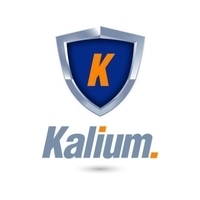
Articles
Enhancing Workplace Safety Through Effective Chemical Spill Prevention

Share this post
Preventing chemical spills is critical for maintaining safety and compliance in workplaces that handle hazardous substances. Spills not only pose immediate physical risks to employees can lead to environmental damage and regulatory penalties. Investing in proper training and safety measures ensures that organizations are well-prepared to handle potentially dangerous situations. Services like hazardous chemical training, dangerous goods training, and SDS authoring services play a pivotal role in preventing chemical accidents and ensuring workplace safety.
Understanding the Risks of Chemical Spills
Chemical spills can occur in any environment where hazardous substances are stored, transported, or used. Common risks include:
- Health hazards from exposure to toxic or corrosive chemicals
- Fire or explosion risks with flammable substances
- Environmental contamination
- Regulatory non-compliance leading to fines or shutdowns
Proper awareness and preparedness through hazardous chemical training and dangerous goods training are essential in mitigating these risks.
Key Strategies for Chemical Spill Prevention
1 Comprehensive Employee Training: Providing employees with hazardous chemical training and dangerous goods training equips them to handle chemicals safely, recognize potential hazards, and respond effectively in case of spills. Regular refresher courses ensure that staff remain up-to-date on best practices and compliance standards.
2 Proper Storage and Labeling: Chemicals should be stored according to their properties, with clear labeling and segregation to prevent accidental mixing. Utilizing proper containers and secondary containment systems reduces the likelihood of spills.
3 Use of SDS and Documentation: Maintaining accurate Safety Data Sheets (SDS) for all chemicals is vital. SDS authoring services can help create and update these documents, ensuring that employees have access to correct handling procedures, emergency instructions, and hazard information.
4 Spill Response Planning: Even with preventive measures, accidents can happen. Developing a comprehensive spill response plan, including clearly defined roles, emergency equipment, and containment procedures, ensures rapid and effective action.
5 Regular Audits and Inspections: Routine inspections of storage areas, equipment, and handling processes help identify potential risks before they result in a spill.
Benefits of Effective Chemical Spill Prevention
Implementing these strategies offers multiple advantages:
1 Enhanced workplace safety and reduced injury risk
2 Compliance with regulatory standards and reduced liability
3 Protection of the environment from hazardous contamination
4 Increased employee confidence and awareness
5 Operational efficiency by minimizing disruptions due to accidents
Through hazardous chemical training, dangerous goods training, and proper documentation via SDS authoring services, organizations can maintain a culture of safety and responsibility.
Conclusion
Preventing chemical spills is an essential component of workplace safety and compliance. By implementing comprehensive training programs, maintaining accurate SDS, and establishing robust spill prevention and response protocols, organizations can significantly reduce the risk of accidents. Leveraging hazardous chemical training, dangerous goods training, SDS authoring services ensures that employees are prepared, informed, and capable of handling chemicals safely.
